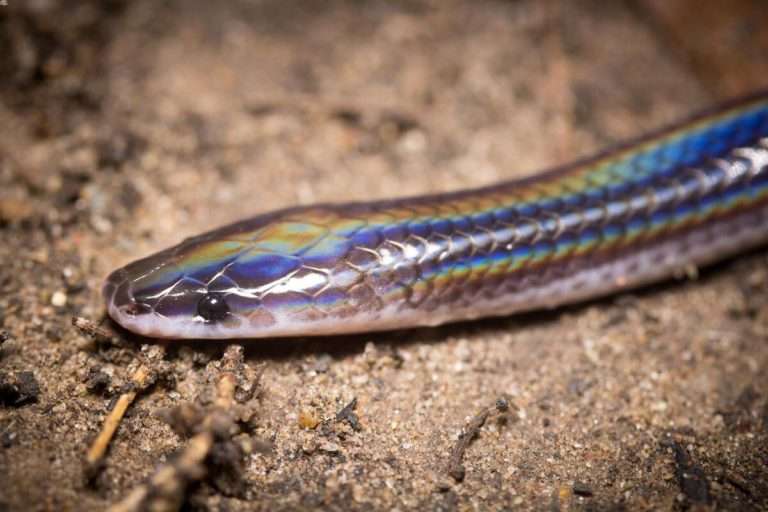
Description:
Scientific name: Xenopeltis
Life span: 10 years
Its brightly iridescent scales and fast rate of reproduction distinguish the non-venomous Sunbeam snake. Its head is easily pushed through the ground because of its thin, wedge-shaped shape and lack of a neck. The most distinguishing characteristic of this snake is its highly polished, iridescent scales, which also give it its common name. Under each scale’s surface, there is a small layer of black pigmentation that enhances the iridescence.
Native Region/Habitat
Southeast Asia and some parts of Indonesia are home to sunbeam snakes. They frequently frequent rice paddies and love to reside in open spaces like woodland clearings, shrubland, marshes, gardens, and parks.

Behavior:
These snakes are fossorial, meaning they spend the most of their time underground. They live alone and only leave to eat. They hunt during the day, suffocating their prey in their muscular coils. When handled roughly, sunbeam snakes may attack readily, but they typically only try to go away when picked up. When threatened, they also vibrate their tails in a rattlesnake-like manner.
Care As a pet/In captivity:
Humidity: Sunbeam snakes need an environment with a humidity of at least 75%. For this reason, a lot of people who keep these snakes like to keep them in plastic tubs.
Enclosure: Sunbeam snakes need an environment with a humidity of at least 75%. For this reason, a lot of people who keep these snakes like to keep them in plastic tubs. Ideally, a 32-quart plastic tub would be used. Once you’ve decided on an enclosure, it’s time to consider a substrate. The greatest substrate is going to be something supple and earthy, like coconut coir. Your snake will be able to dig as deeply as it desires thanks to this.
Temperature: For sunbeam snakes, an under-tank warmer such as a heating pad works well. In contrast to an overhead heating bulb, it will keep the cage warm without rapidly dehydrating the air. With an ambient temperature of about 80 degrees, the hot spot of the enclosure should remain around 85 degrees. The enclosure’s cool side should be between 70 and 75 degrees.
Diet: If offered, this snake will undoubtedly eat a frog or a lizard; they can survive entirely on rodents. They typically have an intense need to eat. Rodents that have been frozen or thawed are usually significantly more advantageous and less expensive. Your snake is at risk from live prey.
Table





